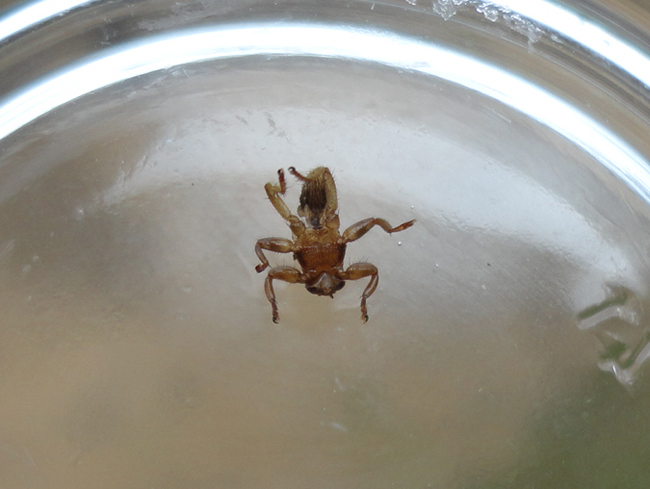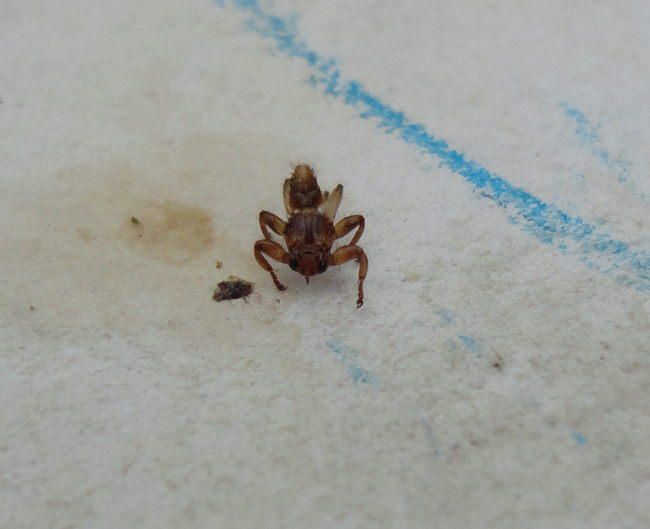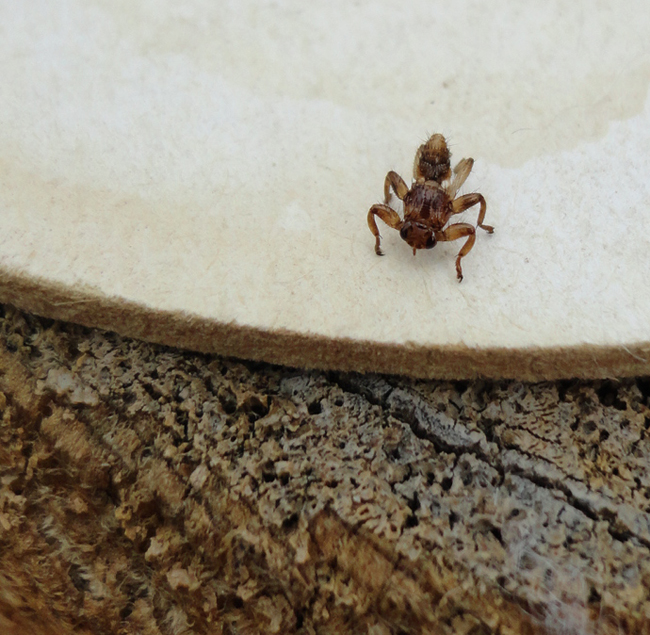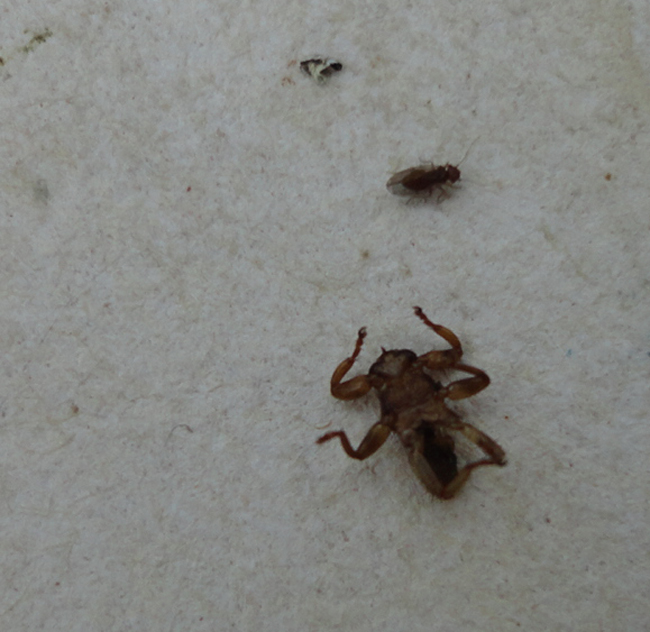UPDATE: This isn’t really a bat fly. It’s a deer ked.
Back in October, I was weed-whacking in the yard, cutting down some 1-meter-tall grass and then picking up bundles of the fallen grass to put on our compost pile. I was out in the yard doing this for about an hour, then I came inside to have dinner with Lily and Baxter. Halfway through dinner, I felt something crawling on my chest. I looked down my collar, and saw something tick-like crawling around, but much faster than a tick. I reached down and plucked it out as it got up towards my neck.
Holy cow, I told my wife, I think this is a parasitic fly that lives on bats.

Tick-sized (~4 mm length) as well as tick-shaped, the batfly is a highly derived fly that has given up its wings in favor of a parasitic life on bat hosts. He’s upside-down in these first two images, but I observed he can do a quick “head-stand” as a way of pivoting and changing direction. Here it is with another small fly (a fruit fly??) next to it:
This is what he looks like right-side-up:

At the edge of a beer coaster:

What I can’t figure out is what he was doing in that grass. Did he lose his grip on his host bat the night before? Surely the bats weren’t hanging out in the tall grass? Anyhow, I was grossed out at first when I discovered him on me, but then upon reflection, I felt like it was pretty cool to see such a specialized insect, and one that most people are unlikely to ever come into contact with.


Someone in our caving club (the D.C. Grotto) read this post & was skeptical, so he sent it along to Carl W. Dick, a biology professor at Western Kentucky U. His reply was:
The fly in the photo isn’t a bat fly (families Streblidae and Nycteribiidae), but it’s rather a fly in the family Hippoboscidae. All three of those families are monophyletic, but while the bat flies are strictly parasites of bats, the hippoboscids are mostly parasites of birds with a few genera that parasitize mammals (sheep and deer keds, for example). The one in the picture may be a species of the genus Melophagus.
Personally, I have no knowledge of fly taxonomy, but I thought I’d throw this in.
Paul Gillis
Thanks for the fact-check!